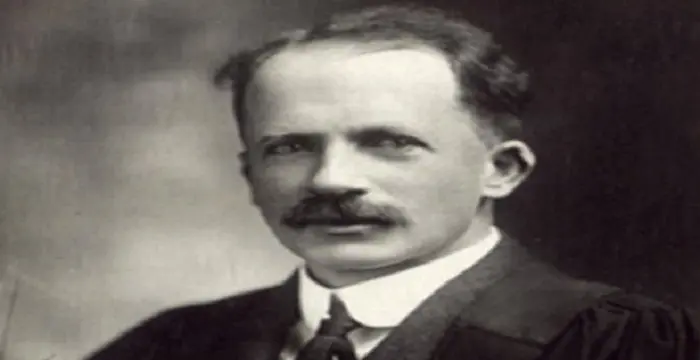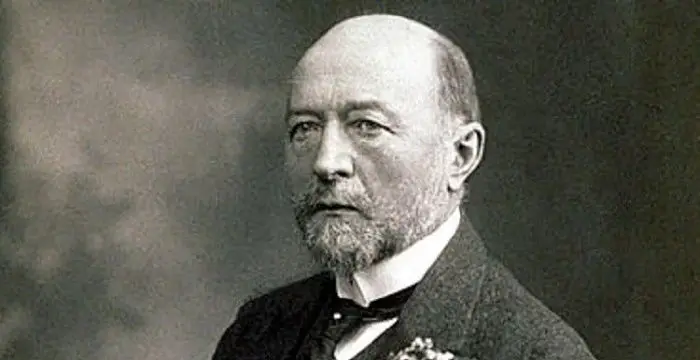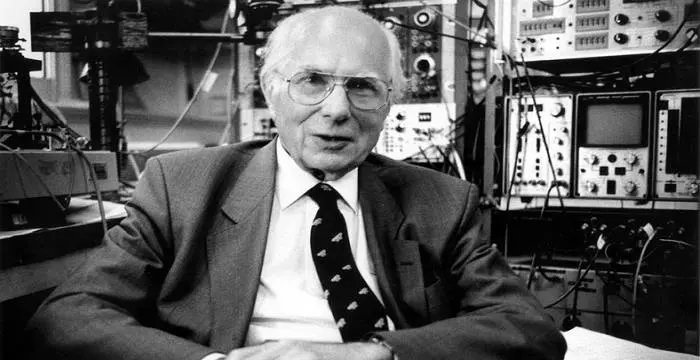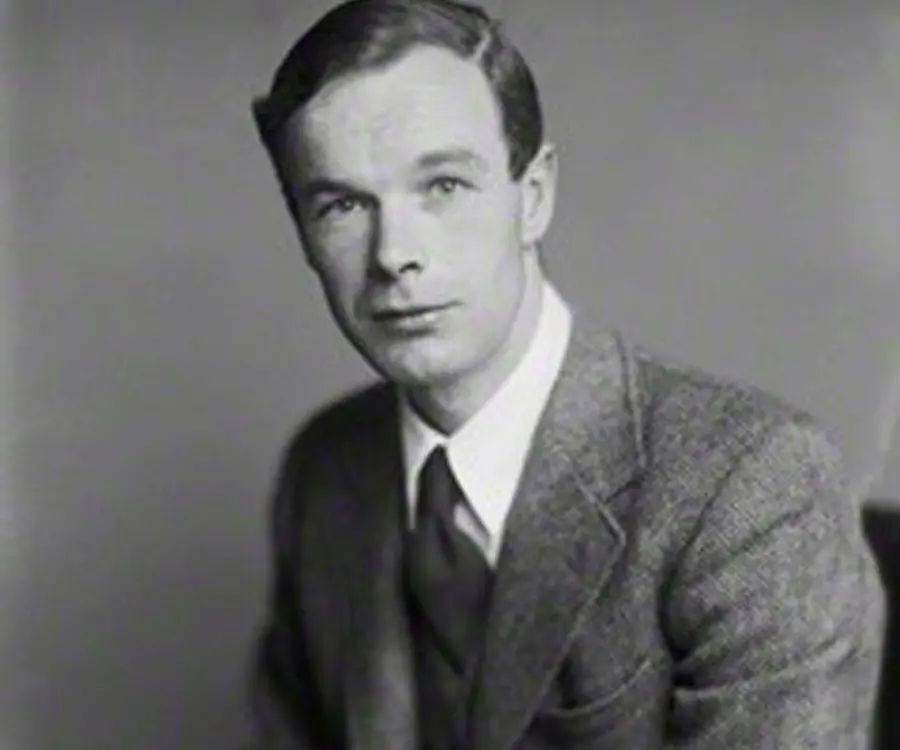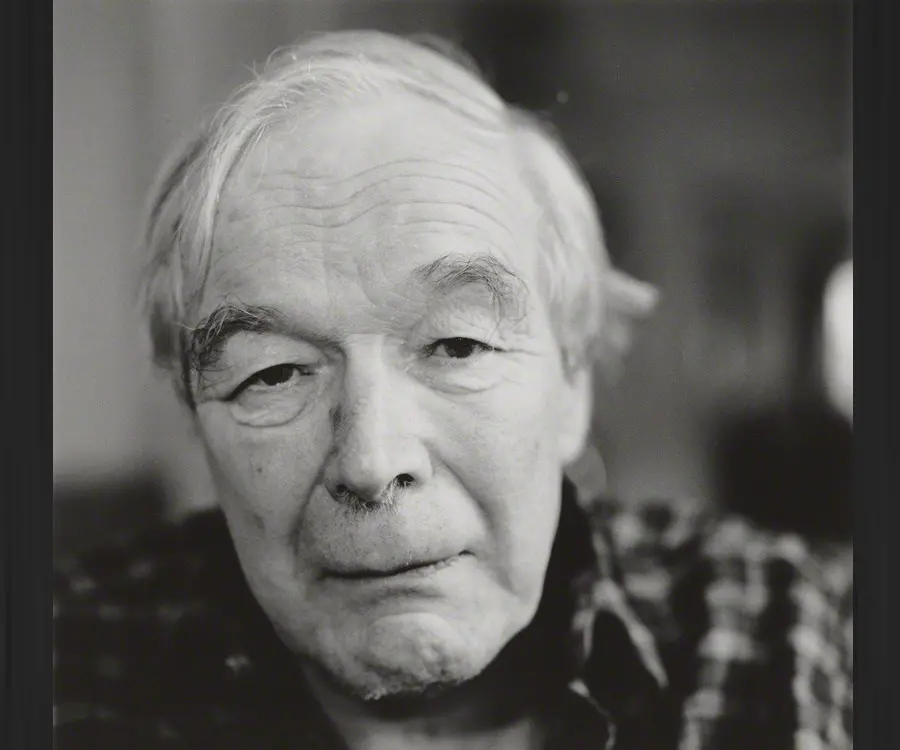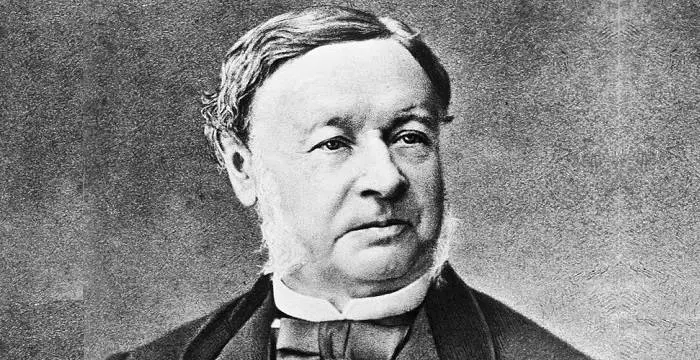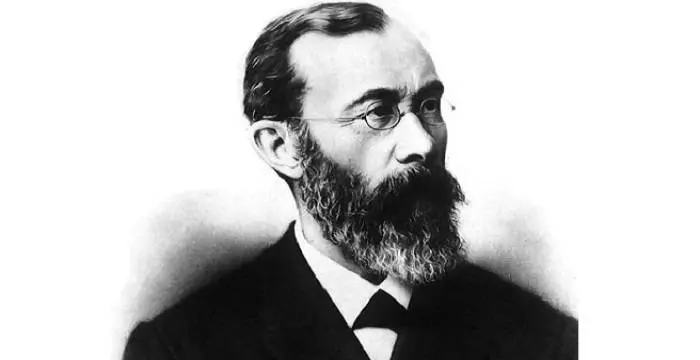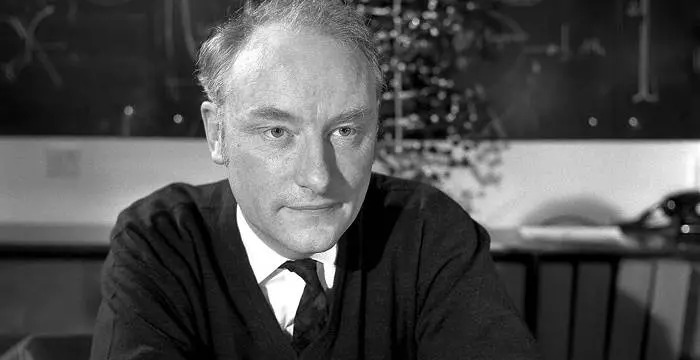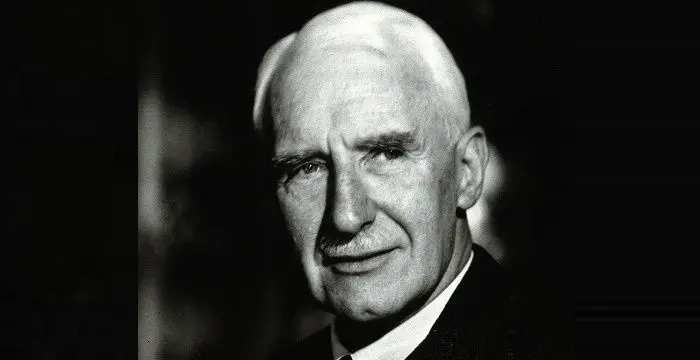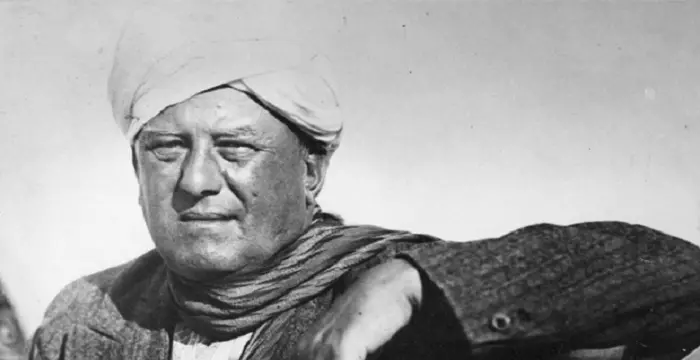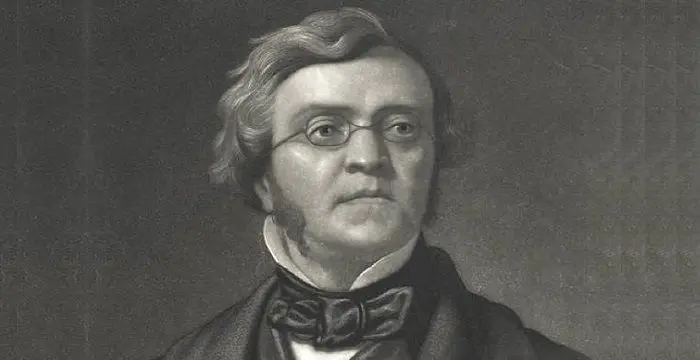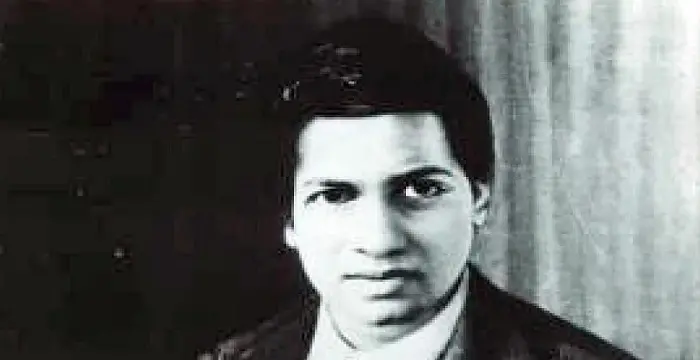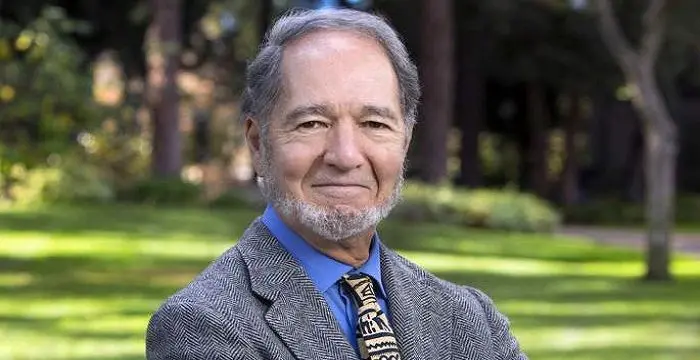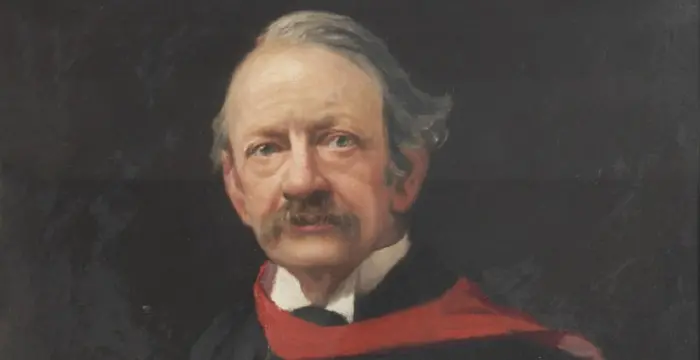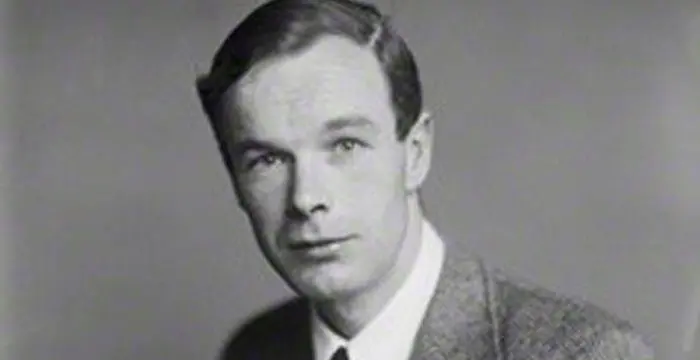
Alan Lloyd Hodgkin - Physiologists, Timeline and Childhood
Alan Lloyd Hodgkin's Personal Details
Sir Alan Lloyd Hodgkin was an English biophysicist and a physiologist who received the Nobel prize in Physiology or Medicine in 1963
| Information | Detail |
|---|---|
| Birthday | February 5, 1914 |
| Died on | December 20, 1998 |
| Nationality | British |
| Famous | Trinity College, Cambridge, Scientists, Biophysicists, Physiologists, Physiologists |
| Spouses | Marion Rous |
| Childrens | Deborah, Jonathan, Rachel, Sarah |
| Universities |
|
| Notable Alumnis |
|
| Birth Place | Banbury, Oxfordshire, England, UK |
| Gender | Male |
| Father | George Hodgkin |
| Mother | Mary Wilson |
| Sun Sign | Aquarius |
| Born in | Banbury, Oxfordshire, England, UK |
| Famous as | Biophysicist & Physiologist |
| Died at Age | 84 |
// Famous Physiologists
John James Rickard Macleod
John James Rickard Macleod was a Scottish biochemist and physiologist who is credited for the discovery of insulin. With this biography, explore in detail about his life, career, scientific research and timeline.
Emil Adolf von Behring
Emil Behring was a famous German physiologist who won the Nobel Prize for discovering an antitoxin for diphtheria. To know more about his childhood, career, profile and timeline read on
Andrew Huxley
Sir Andrew Fielding Huxley was a British physiologist, biophysicist, mathematician and a mechanical wizard. He was awarded the Nobel Prize for Medicine in 1963. This biography profiles his childhood, life, research, achievements and timeline.
Alan Lloyd Hodgkin's photo
Who is Alan Lloyd Hodgkin?
Sir Alan Lloyd Hodgkin was an English biophysicist and a physiologist who received the Nobel prize in Physiology or Medicine along with Sir John Eccles and Andrew Fielding Huxley for discovering the chemical processes which controlled the transmission of electrical impulses from one nerve cell in the brain to another though nerve fibers. He and his fellow scientists introduced microelectrodes into the giant nerve fibers of a squid and showed that the electrical potential of a nerve fiber transmitting an impulse is higher than a nerve fiber which remains at rest. This discovery was in contradiction to the earlier hypothesis that nerve membranes break down when an impulse was transmitted. This theory formulated by Hodgkin and Huxley is known as the ‘voltage clamp’. They found that a large amount of potassium ions is concentrated inside a nerve fiber while the solution which surrounds the fibers has a large concentration of sodium ions. They proved with the help of experiments that nerve fibers allow only potassium ions to pass through the membrane when they are at rest while only sodium ions are allowed passage when the fibers are excited. The continuous sequence of depolarization that occurs to the nerve cell membranes discovered by him is known as the ‘Hodgkin Cycle’.
// Famous Physiologists
Theodor Schwann
Theodor Schwann was a German physiologist who discovered the Schwann cells in the peripheral nervous system. This biography of Theodor Schwann provides detailed information about his childhood, life, achievements, works & timeline.
Wilhelm Wundt
Wilhelm Wundt was a renowned doctor who conducted pioneering studies on experimental psychology. To know more about his childhood, career, profile and timeline read on
Charles Best
Charles Best was a great scientist and a renowned physiologist who is remembered for being the co-discoverer of insulin. Read this biography to learn about his profile, childhood, life and timeline.
Childhood & Early Life
Alan Lloyd Hodgkin was born in Banbury, Oxfordshire, England on February 5, 1914 to George Hodgkin and Mary Wilson.
When his father died of dysentery in 1918 in Baghdad, his mother re-married Lionel Smith. They lived with him thereafter.
He studied at the ‘The Downs School, Malvern’ from 1923 to 1927 and later at the ‘Gresham’s School, Holt’ from 1927 to 1932.
He joined the Trinity College affiliated to the Cambridge University in 1932 and studied there till 1936.
Career
Alan Lloyd Hodgkin started his experiments on the nervous system of frogs in 1935 while he was at the University of Cambridge.
He received an invitation from Gasser to work at his laboratory located in the Rockfeller Institute in New York in 1937.
From 1937 to 1938 he learnt to dissect squid axons with the help of K. S. Cole at ‘Woods Hole’.
He returned to Cambridge in 1938 and started to work with one of his students, A.F. Huxley.
He worked for the ‘British Air Ministry’ from 1939 to 1940 on aviation medicine with Matthews at Farnborough.
From 1940 to 1945 he carried out various experiments on improving the radar which helped the war effort a great deal. He worked on 10 cm display and scanning systems for improving the night-fighting capabilities of aircrafts. He also worked in designing the ‘Village Inn AGLT Airborne Gun-laying system’.
In early 1941 he was involved in the in-flight testing of the centimetric radar system aboard one of the Bristol Blenhein aircrafts.
He joined the faculty at the ‘Cambridge University’ in 1945 as a teacher in the Physiology Laboratory.
When Huxley returned to Cambridge a few months later he teamed up with Huxley again to continue with their earlier experiments.
Hodgkin and Huxley carried out most of their experiments on the chemical and electrical characteristics of nerve fibers in the laboratory of the ‘Marine Biological Association’ till 1952.
In 1951 Hodgkin became a ‘Foulerton Research Professor’ at the ‘Royal Society’.
Though the war had interrupted their experiments for a certain period after 1939, Hodgkin and Huxley were able to continue with their experiments after the war had ended and in 1952 were able to publish a paper describing the findings they obtained from experimenting on nerve fibers.
Hodgkin served on the ‘Royal Society Council’ from 1958 to 1960 and then on the ‘Medical Research Council’ from 1959 to 1963.
He was made the foreign secretary of ‘Physiological Society’ from 1961 to 1967.
He became the President of the ‘Marine Biological Association’ in 1966 and the President of the ‘Royal Society’ in December 1970.
He served as a professor of biophysics at the ‘Cambridge University’ in 1970 after becoming a ‘John Humphrey Plummer Professor of Biophysics’.
He became the chancellor of the ‘Leicester University’ in 1971 and held the post till 1984.
He was appointed as the Master of the Trinity College in 1978 and served there till 1985.
During different periods of his service he became a ‘Foreign Member of the American Philosophical Society’, a ‘Foreign Member of the American Academy of Arts and Sciences’, ‘Member of the Deutsche Akademie’, an ‘Honorary Fellow of the ‘Indian National Science Academy’, an Honorary M.D. of the Louvain and Berne universities, and an Honorary D.Sc of the universities of Newcastle, Sheffield, Manchester, E.Anglia, London and Leicester.
Major Works
Sir Alan Hodgkin’s writings include the book titled ‘Conduction of the Nervous Impulse’ which was published in 1964.
He published his autobiography titled ‘Chance and Design: Reminiscences of Science in Peace and War’ in 1992.
Awards & Achievements
Sir Alan Lloyd Hodgkin was awarded the ‘Royal Medal of the Royal Society’ in 1958.
He received the Nobel Prize in Physiology or Medicine in 1963.
He was made a ‘Member of the Royal Danish Academy of Sciences’ in 1964.
He received the ‘Copley Medal of the Royal Society’ in 1965.
He was made a ‘Knight of the British Empire’ and received his knighthood in 1972
He was also awarded the ‘Order of Merit’ in 1973.
Personal Life & Legacy
While working at the Rockfeller Institute, he met Marion Rous, daughter of the famous pathologist Peyton Rous, and married her in 1944.
He had a son, Jonathan, after two daughters, Sarah and Deborah, and then the youngest daughter, Rachel, from this marriage.
Sir Alan Lloyd Hodgkin died in Cambridge, England on December 20, 1998.
Trivia
The favorite pastimes of Sir Alan Lloyd Hodgkin comprised of travelling and fishing.
// Famous Biophysicists
James Watson
James Watson is an American molecular biologist and geneticist who played a crucial role in the discovery of the molecular structure of D.N.A. This biography provides detailed information about his childhood, life, achievements, works & timeline
Francis Crick
Francis Crick was an English molecular biologist, biophysicist and neuroscientist, who received the Nobel Prize for Medicine. This biography profiles his childhood, life, career, achievements and timeline.
Archibald Hill
Archibald Vivian Hill was a Nobel Laureate English physiologist who is credited for discovering the production of heat in muscles. Check out this biography to know about his childhood, life, achievements, works & timeline.
Alan Lloyd Hodgkin's awards
| Year | Name | Award |
|---|---|---|
Other | ||
| 0 | Royal Medal (1958) | |
| 0 | Nobel Prize in Physiology or Medicine (1963) | |
| 0 | Copley Medal (1965) | |
Alan Lloyd Hodgkin biography timelines
- // 5th Feb 1914Alan Lloyd Hodgkin was born in Banbury, Oxfordshire, England on February 5, 1914 to George Hodgkin and Mary Wilson.
- // 1918When his father died of dysentery in 1918 in Baghdad, his mother re-married Lionel Smith. They lived with him thereafter.
- // 1932 To 1936He joined the Trinity College affiliated to the Cambridge University in 1932 and studied there till 1936.
- // 1935Alan Lloyd Hodgkin started his experiments on the nervous system of frogs in 1935 while he was at the University of Cambridge.
- // 1937He received an invitation from Gasser to work at his laboratory located in the Rockfeller Institute in New York in 1937.
- // 1937 To 1938From 1937 to 1938 he learnt to dissect squid axons with the help of K. S. Cole at ‘Woods Hole’.
- // 1938He returned to Cambridge in 1938 and started to work with one of his students, A.F. Huxley.
- // 1939 To 1940He worked for the ‘British Air Ministry’ from 1939 to 1940 on aviation medicine with Matthews at Farnborough.
- // 1939 To 1952Though the war had interrupted their experiments for a certain period after 1939, Hodgkin and Huxley were able to continue with their experiments after the war had ended and in 1952 were able to publish a paper describing the findings they obtained from experimenting on nerve fibers.
- // 1940 To 1945From 1940 to 1945 he carried out various experiments on improving the radar which helped the war effort a great deal. He worked on 10 cm display and scanning systems for improving the night-fighting capabilities of aircrafts. He also worked in designing the ‘Village Inn AGLT Airborne Gun-laying system’.
- // 1941In early 1941 he was involved in the in-flight testing of the centimetric radar system aboard one of the Bristol Blenhein aircrafts.
- // 1944While working at the Rockfeller Institute, he met Marion Rous, daughter of the famous pathologist Peyton Rous, and married her in 1944.
- // 1945He joined the faculty at the ‘Cambridge University’ in 1945 as a teacher in the Physiology Laboratory.
- // 1951In 1951 Hodgkin became a ‘Foulerton Research Professor’ at the ‘Royal Society’.
- // 1952Hodgkin and Huxley carried out most of their experiments on the chemical and electrical characteristics of nerve fibers in the laboratory of the ‘Marine Biological Association’ till 1952.
- // 1958Sir Alan Lloyd Hodgkin was awarded the ‘Royal Medal of the Royal Society’ in 1958.
- // 1961 To 1967He was made the foreign secretary of ‘Physiological Society’ from 1961 to 1967.
- // 1963He received the Nobel Prize in Physiology or Medicine in 1963.
- // 1964Sir Alan Hodgkin’s writings include the book titled ‘Conduction of the Nervous Impulse’ which was published in 1964.
- // 1964He was made a ‘Member of the Royal Danish Academy of Sciences’ in 1964.
- // 1965He received the ‘Copley Medal of the Royal Society’ in 1965.
- // 1966 To Dec 1970He became the President of the ‘Marine Biological Association’ in 1966 and the President of the ‘Royal Society’ in December 1970.
- // 1970He served as a professor of biophysics at the ‘Cambridge University’ in 1970 after becoming a ‘John Humphrey Plummer Professor of Biophysics’.
- // 1971 To 1984He became the chancellor of the ‘Leicester University’ in 1971 and held the post till 1984.
- // 1972He was made a ‘Knight of the British Empire’ and received his knighthood in 1972
- // 1973He was also awarded the ‘Order of Merit’ in 1973.
- // 1978 To 1985He was appointed as the Master of the Trinity College in 1978 and served there till 1985.
- // 1992He published his autobiography titled ‘Chance and Design: Reminiscences of Science in Peace and War’ in 1992.
- // 20th Dec 1998Sir Alan Lloyd Hodgkin died in Cambridge, England on December 20, 1998.
// Famous Trinity College, Cambridge
Isaac Newton
Isaac Newton was an English scientist and mathematician, who discovered gravitation and Newtonian Mechanics. Read this biography to find more on his life.
Aleister Crowley
Aleister Crowley was an occultist and ceremonial magician who founded the ethical philosophy of Thelema. This biography of Aleister Crowley provides detailed information about his childhood, life, achievements, works & timeline.
William Makepeace Thackeray
William Thackeray was an English novelist and satirist. Read this brief biography to find more on his life & timeline.
Srinivasa Ramanujan
Srinivasa Ramanujan was an Indian mathematician who made significant contributions to mathematical analysis, number theory, and continued fractions. Check out this biography to know about his childhood, life, achievements, works & timeline. .
Jared Diamond
Jared Mason Diamond is an American scientist and author reputed for his highly acclaimed and popular science books.
J. J. Thomson
J.J. Thomson was an English physicist and mathematician. This biography profiles his childhood, life, academic career, research and timeline.
Alan Lloyd Hodgkin's FAQ
What is Alan Lloyd Hodgkin birthday?
Alan Lloyd Hodgkin was born at 1914-02-05
When was Alan Lloyd Hodgkin died?
Alan Lloyd Hodgkin was died at 1998-12-20
Where was Alan Lloyd Hodgkin died?
Alan Lloyd Hodgkin was died in Cambridge, Cambridgeshire, England, UK
Which age was Alan Lloyd Hodgkin died?
Alan Lloyd Hodgkin was died at age 84
Where is Alan Lloyd Hodgkin's birth place?
Alan Lloyd Hodgkin was born in Banbury, Oxfordshire, England, UK
What is Alan Lloyd Hodgkin nationalities?
Alan Lloyd Hodgkin's nationalities is British
Who is Alan Lloyd Hodgkin spouses?
Alan Lloyd Hodgkin's spouses is Marion Rous
Who is Alan Lloyd Hodgkin childrens?
Alan Lloyd Hodgkin's childrens is Deborah, Jonathan, Rachel, Sarah
What was Alan Lloyd Hodgkin universities?
Alan Lloyd Hodgkin studied at Trinity College, Cambridge
What was Alan Lloyd Hodgkin notable alumnis?
Alan Lloyd Hodgkin's notable alumnis is Trinity College, Cambridge
Who is Alan Lloyd Hodgkin's father?
Alan Lloyd Hodgkin's father is George Hodgkin
Who is Alan Lloyd Hodgkin's mother?
Alan Lloyd Hodgkin's mother is Mary Wilson
What is Alan Lloyd Hodgkin's sun sign?
Alan Lloyd Hodgkin is Aquarius
How famous is Alan Lloyd Hodgkin?
Alan Lloyd Hodgkin is famouse as Biophysicist & Physiologist
